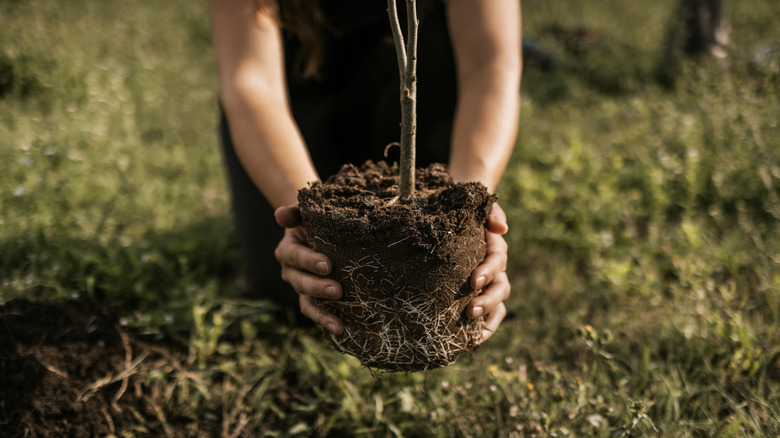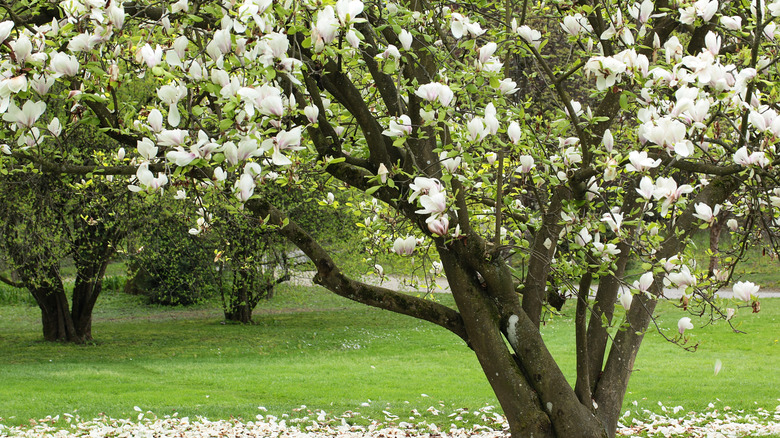The Fragrant Small Tree You Should Think Twice Before Planting In Your Yard (& What To Grow Instead)
As the weather starts warming up, there are few things as exciting as stepping outside to enjoy the fragrance of spring blooms. In addition to its intoxicating aroma, cherry laurel (Prunus laurocerasus) seems to have a lot of favorable attributes: glossy, laurel-like leaves, creamy white flowers, and attractive berries in summer. It grows up to two feet each year, so its fast growth has also made it a popular choice for use as a fast-growing privacy tree that looks beautiful nearly year-round. Plus, it's incredibly adaptable, with the ability to thrive in a wide range of soil types and everything from full sun to deep shade. While you may think this sounds like a dream tree, it doesn't take long to see the drawbacks that come with planting it in your yard.
Despite its common name, cherry laurel isn't actually a true laurel. Instead, this European native is a member of the rose family, and gets its name from its laurel-like leaves. Because this non-native grows so aggressively, it's considered weedy or invasive in many regions, and can outcompete native species for their water and nutrients. Not only can the fallen berries create a staining mess, but they're also dangerous. All parts of the plant contain cyanogenic compounds, making it extremely toxic to humans and pets if ingested. If all that wasn't enough, it can also be a pain to maintain. The dense growth requires regular pruning to keep it disease-free and looking its best.
Benefits of planting sweet bay magnolia instead
If you want the benefits of the cherry laurel without the issues, then sweet bay magnolia (Magnolia virginiana) is one of the best alternatives. Sometimes nicknamed small laurel magnolia, it features glossy, laurel-like leaves that keep the tree looking elegant and full throughout the year. Unlike its invasive alternative, it's native to parts of the southeastern US, commonly seen growing in shady woods are nearby swamps. In spring, the tree erupts with creamy white, cup-shaped flowers that last through summer. Wildlife loves this tree too. Being a larval host to several species of swallowtails, sweet bay magnolia trees are sought after by butterflies. Then, its seeds that ripen in autumn will attract a variety of birds to your yard.
Sweet bay magnolia is also a quick grower, so you won't have to wait long to fill your yard with its sweet, citrusy fragrance. It's low-maintenance and easily tolerates wet soils, making it a great option for a rain garden. For the best growth, plant this tree in organically rich, acidic soil in an area with full sun to partial shade. Once established, it can reach up to 35 feet tall and wide, but you can find more compact cultivars that can fit in smaller yards. It's easily grown in USDA Hardiness Zones 5 to 10, though winter damage is possible in lower zones. However, there are also varieties that can handle cooler winters, with some staying evergreen down to Zone 4.

